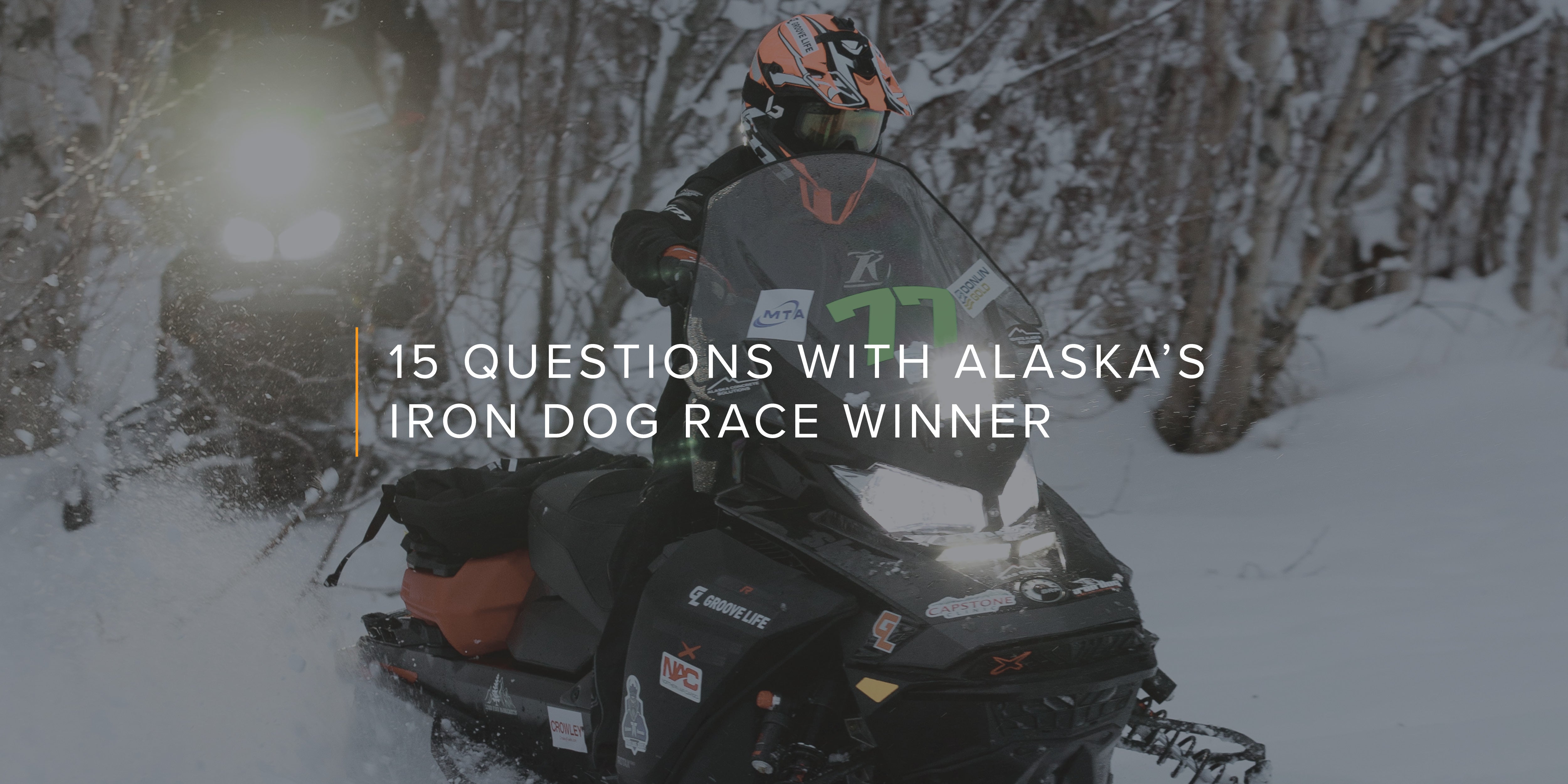15 Questions with Alaska’s Iron Dog Race Winner Tyler Aklestad
The Iron Dog is the world’s longest, toughest snowmobile race.
Tyler Aklestad, and his teammate Nick Olstad, recently took first place in the world’s longest and toughest winter race: The Iron Dog Snowmobile Race 2022.
Covering over 2,400 miles of wild, rugged, snowy terrain, snowmobilers race from Wasilla, Alaska, all the way to Nome, Alaska—and back.
To put that in perspective, that’s like racing from New York City to Las Vegas, Nevada, alone on a snowmobile, through a snowstorm. Which may be why half the teams who enter the Iron Dog do not finish.
Tyler is on the left.
The Anchorage Daily News says Aklestad & Olstad won the race by setting a “blistering pace.”
Tyler, a native of Palmer Alaska, did it in record time (53:27:21) on his Ski-Doo MXZ X-RS 600.
That’s 53 hours, 27 minutes, and 21 seconds.
You can check out the video footage HERE:
We caught up with Tyler to ask him a few questions...
1. First, let’s settle the debate. Are they 'snowmachines' or 'snowmobiles'?
Well, being from Alaska, I better say snowmachine or I will be disowned as an Alaskan.
2. Did you plan the Akle-STAD / Ol-STAD thing?
No, that was not planned, but pretty cool. I suppose it’s a Norwegian thing.

3. How do you prepare for a race like the Iron Dog, covering over 2,400 miles?
Time and more time. Lots of training in the gym, but more importantly, trying to train yourself mentally to get used to it. Physically demanding long days, dehydration, and limited sleep. On the longest days our calorie burn will be over 10K for the day.
The past few years, Nick and I have tried to mimic the race during our training, typically racing 300 to 400 miles in a day, with limited stops and limited hydration. The hardest part about staying hydrated during the race is being able to keep any liquid thawed. It’s typically sub zero temps during the race. The coldest I've seen is -52F.
4. What is the camaraderie like with other racers?
For the most part, everyone is out having a great time. I suppose it can get very competitive like any high stakes race, but we all have a lot of fun along the trail. Usually, everyone has a long list of stories from the trail that we all talk about afterwards.
5. We’ve all heard about the fable The Tortoise and The Hare. What does a smart racer do in a race like this?
It's a combo of both knowing when to go fast and when to, not necessarily go slow, but preserve your equipment. It's really hard to not get caught up in a race with another team out there and start to stray from your plan. That seems to come from years of experience and in my case a few failures over the years.
6. Do you ever get lost out there?
Been pretty lucky to not ever truly get lost. I've been in ground storms where I couldn't tell what direction was up or down and literally just stared at my GPS.
7. What is one of the more treacherous regions you have to race through?
As for terrain, the Alaska Range (Near Mt. Denali) crossing from Skwentna to McGrath is the toughest. But navigation on the coastal sections from Unalakleet to Nome is also tough.
8. Are there trained mechanics along the race trail?
Yes. Us. We are the only ones allowed to work on our sleds. A big part of our training is knowing our sleds inside and out.
9. What are some of the must-have essentials you take with you on a race like this?
Quality gear. Boots, jackets, gloves, everything that protects you from the elements. I want to give a plug to KLIM. They truly make the best snowmachine gear out there that can go from 40 above to 50 below.
10. What makes the Iron Dog different from other races?
The remoteness of the race truly being in the middle of nowhere. As well just the pure ruggedness of Alaska and the weather can go from raining and 40 above to -30 within 12 hours.
11. What are some aspects of the race the casual observer might miss?
The prep leading up to the race and the training runs which helps set the route for the race. And, as I said above, the pure remoteness of course from McGrath to Ruby is 200+ miles of nothing and no one.
12. How do you push yourself when you’re dog tired and the weather is bad?
It's part of the training. The sheer desire to finish and win. You just have to get in the mindset that I am going to get this done.
13. Here at Groove Life we like to inspire adventure and get people outdoors. What other adventures do you and your family enjoy in Alaska?
I truly just love the outdoors and all that the Alaskan wilderness has to offer from fishing to hunting to snowmaching. I'm also a pilot and love to fly. One big thing about Alaska is you have to be willing to just get out and explore. If you do that, you'll fall in love and never want to leave.
14. What does this win mean to you?
It's really just a great feeling of achievement and an affirmation that all our hard work has paid off.
15. Anyone you want to give a shout-out to?
Yes. I want to give a shout-out to all the communities in Alaska that make this race happen and continue to support the race year after year.
